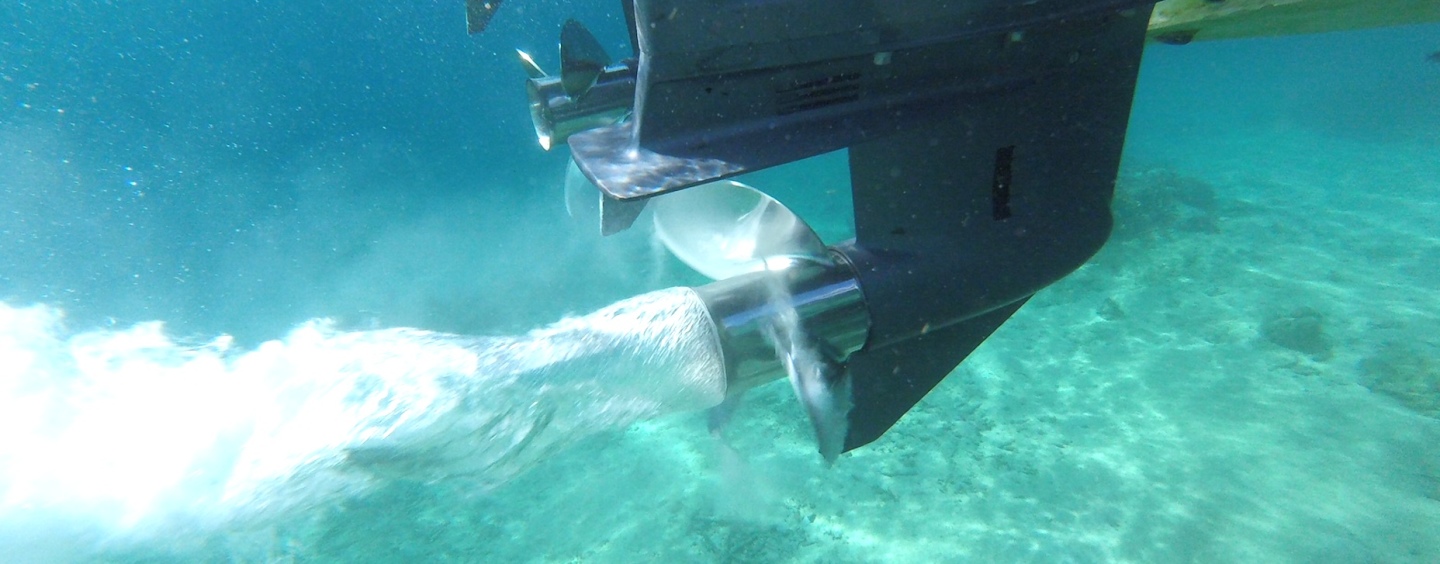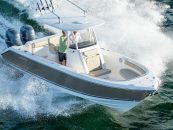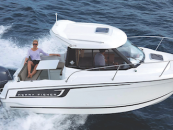The humble propeller is an often-overlooked boating component when you are customizing your dream boat. But it can have a critical impact on the handling and performance of your craft. To help you cut through all the confusion, we chatted with Solas Australia’s “propeller guru”, Steve Evans, to provide some expert advice and give us a preview of where the technology is going.
According to Steve, the first place to start when looking at your propeller is assessing which main power category your boat falls into. Your boat will either be underpowered, overpowered, or adequately powered. While it will be quite easy to notice if your boat is significantly under or overpowered, smaller power mismatches are harder to pick. As well as incorrect engine choice or propeller blade size, the transom height setup can also be a problem. These issues can cause a range of problems including harmonic vibrations, excessive noise, and fuel wastage.
If you find your boat has a power mismatch, there are, thankfully, some easy steps you can take to fix it. For underpowered boats, changing propellers often to one that has the right pitch will allow the engine to achieve its designed rev and torque levels. And if you find yourself at the other end of the spectrum with an overpowered boat, selecting a better-suited propeller is an easy way of modifying that power surplus so that you will achieve better fuel economy and savings from your outboard.
Another challenge buyers are faced with when selecting propellers is that it can be hard to pick the quality blades from the poor ones. Cheaper blades are often using very outdated blade shapes and geometries that are not up to the task of matching the fantastic new engines. Today’s engines feature responsive torque and need that power to be converted to thrust effectively via a range of correct blade ratios. Modern propellers will be more expensive, but they also come with very important service and performance guarantees.
Exciting new propeller technology is rolling out that can have a real impact on handling and performance, without saddling you with excessive weight or fuel bills. Steve explained how new production improvements in compression casting aluminium and new advances in metallurgy in duplex “compound” stainless steel mixes is combining to deliver the biggest shakeup in propeller technology we have seen in years. A number of additional refinements, such as a larger range of blade geometries, blade camber, rake and pitch increments of just one inch, enable the propellers to seamlessly match the torque curves of current model outboards.
With the older propeller technology, this sort of subtlety of blade technology was not required. But in recent years, as we have progressed to variable timing and multivalve technology, it is essential that your propeller can maximise all those advancements. The old fixed-pitch propellers just can’t cut it with today’s engines, especially now with the new computer-controlled blasts and lean burn features. With all of today’s dizzying features you can see why it pays to have an expert help you match the right propeller geometry to your boat setup.
Another huge game changer in the higher horsepower engines has been the introduction of electronic throttle and gearshift control. Suzuki gearboxes lead the field in this area with their proven chain and offset gear designs providing industry-leading longevity.
So if your boat is packing serious horsepower, you will want to keep an eye on the new advances in gear train dampening to the propeller, which synch with your engine’s capabilities. This is still a very bleeding edge area of engine and propeller technology. But the best propeller factories, such as Solas, are developing shaft engagement delays and dampening, all happening inside the propeller hub.
As you can see, matching engines and propellers have become a very complicated science in recent years. The latest engine and propeller technologies are providing boaties with unprecedented power and control, but only if you have the right equipment working in harmony.
For more information about finding the right propeller for your boat, email Steve at the Propeller Warehouse at sales@solas.com.au. Just some simple information, like your propeller name, diameter and pitch, and your maximum boat speed, are enough for Steve and his technicians to crunch the data and give you some expert propeller advice.
(Feb-Apr2017)






























